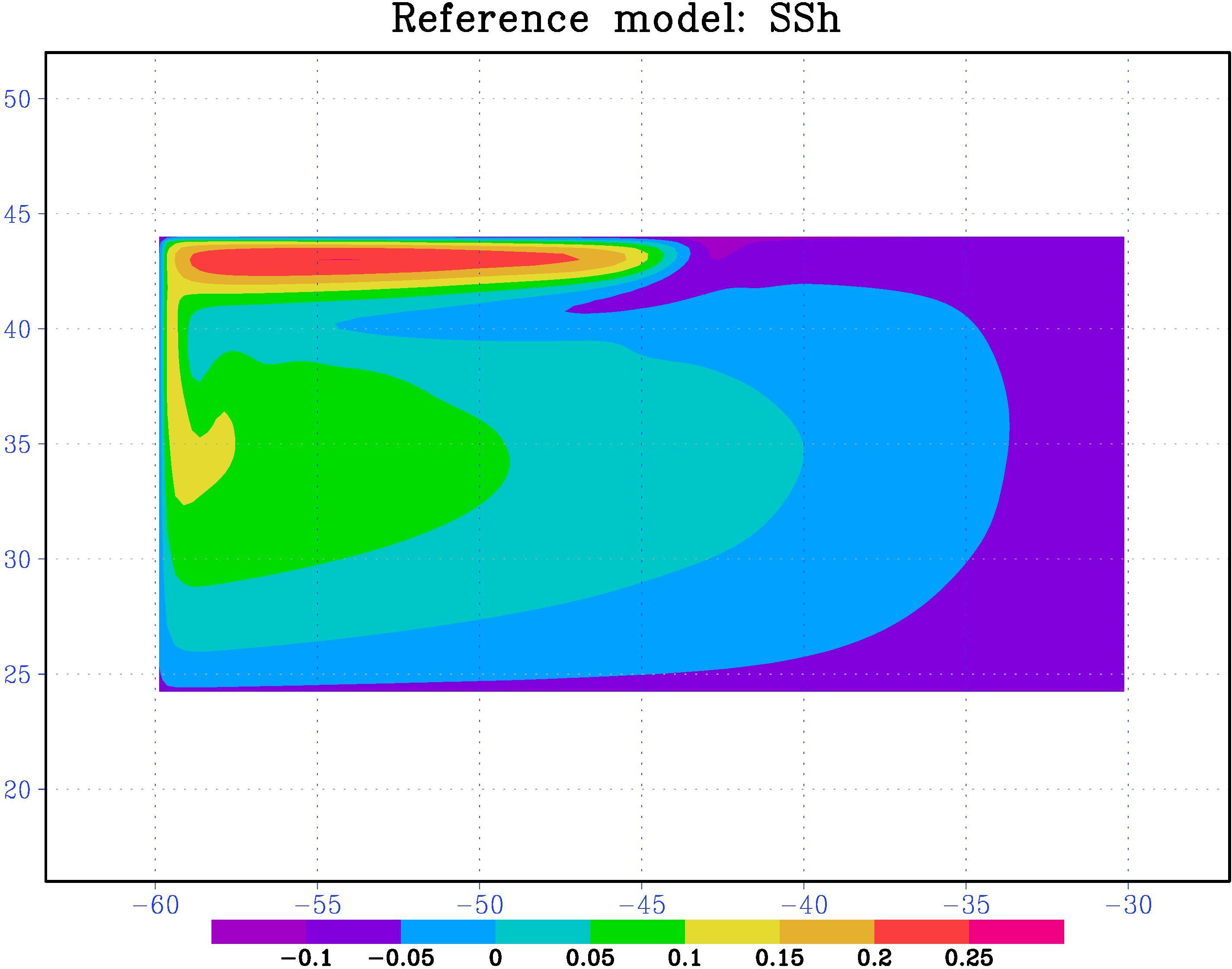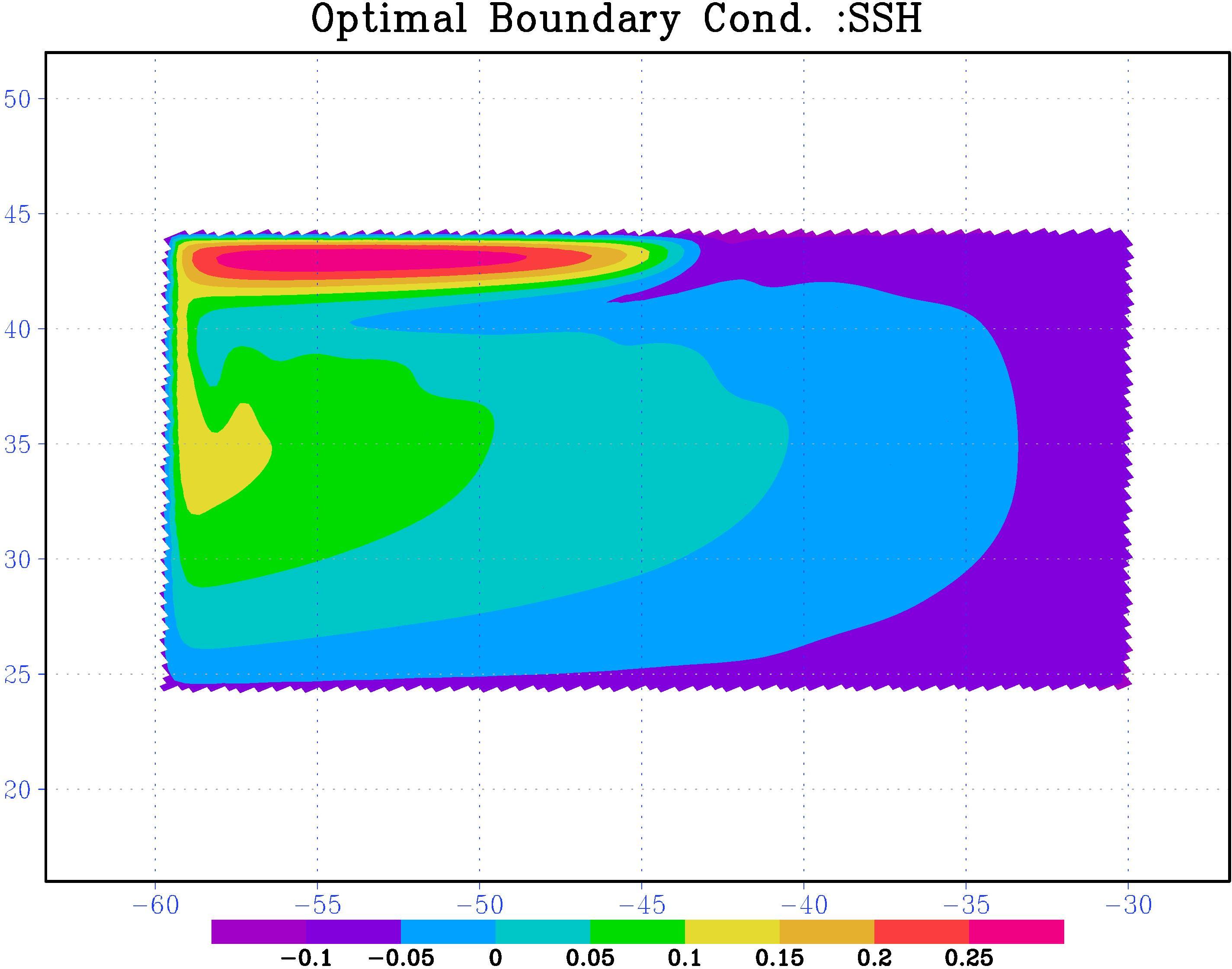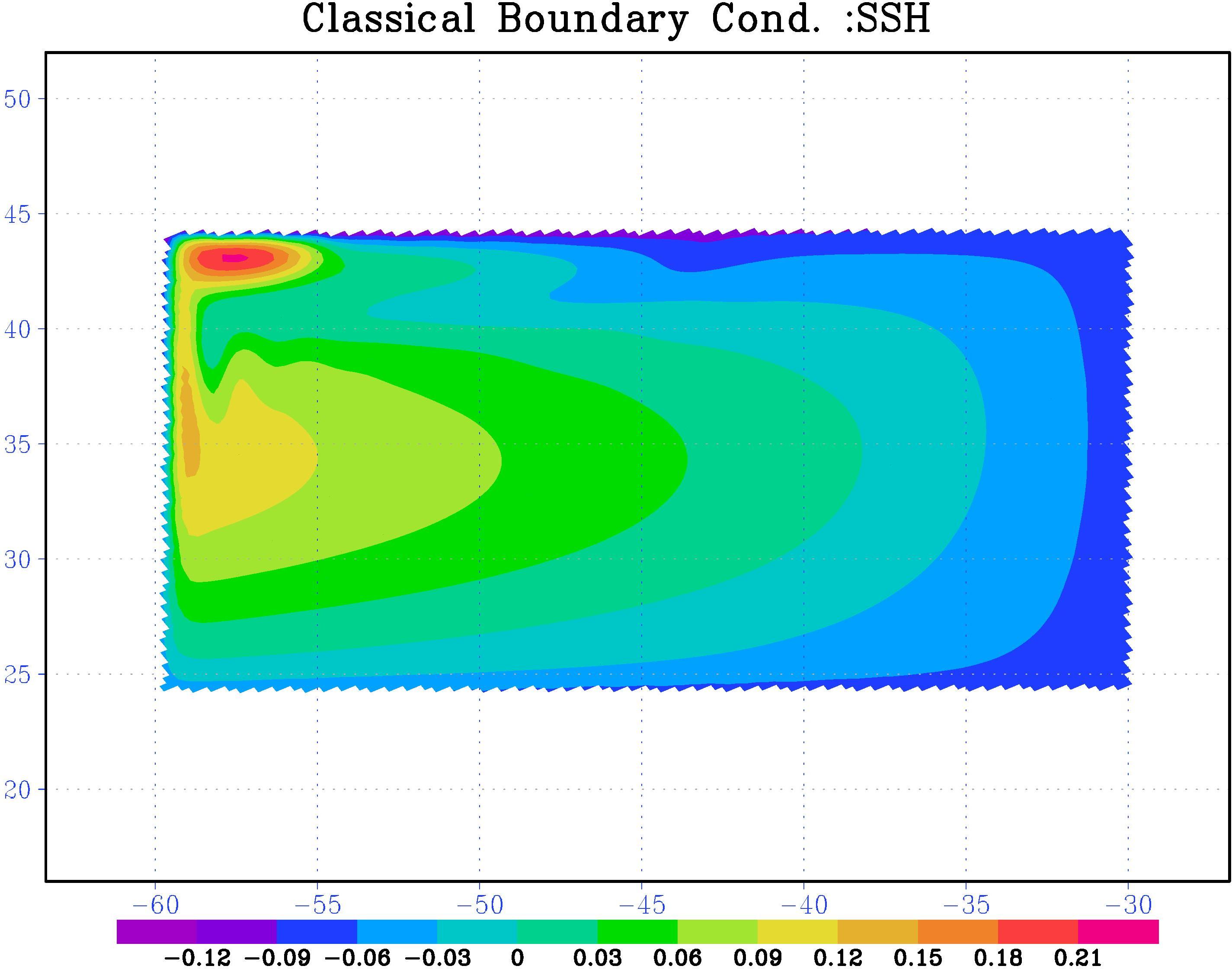Section: New Results
Development of New Methods for Data Assimilation
Variational Data Assimilation with Control of Model Error
Participants : Bénédicte Lemieux-Dudon, Arthur Vidard.
One of the main limitations of the current operational variational data assimilation techniques is that they assume the model to be perfect, mainly because of computing cost issues. Numerous researches have been carried out to reduce the cost of controlling model errors by controlling the correction term only in certain privileged directions or by controlling only the systematic and time correlated part of the error.
Both the above methods consider the model errors as a forcing term in the model equations. Trémolet (2006) describes another approach where the full state vector (4D field: 3D spatial + time) is controlled. Because of computing cost one cannot obviously control the model state at each time step. Therefore, the assimilation window is split into sub-windows, and only the initial conditions of each sub-window are controlled, the junctions between each sub-window being penalized. One interesting property is that, in this case, the computation of the gradients, for the different sub-windows, are independent and therefore can be done in parallel.
This method is now implemented in a realistic oceanic framework using OPAVAR/ NEMOVAR. An extensive documentation has been produced and we are now assessing the improvement over the previous scheme
Direct assimilation of sequences of images
Participants : François-Xavier Le dimet, Maëlle Nodet, Nicolas Papadakis, Arthur Vidard, Vincent Chabot.
At the present time the observation of Earth from space is done by more than thirty satellites. These platforms provide two kinds of observational information:
-
Eulerian information as radiance measurements: the radiative properties of the earth and its fluid envelops. These data can be plugged into numerical models by solving some inverse problems.
-
Lagrangian information: the movement of fronts and vortices give information on the dynamics of the fluid. Presently this information is scarcely used in meteorology by following small cumulus clouds and using them as Lagrangian tracers, but the selection of these clouds must be done by hand and the altitude of the selected clouds must be known. This is done by using the temperature of the top of the cloud.
MOISE was the leader of the ANR ADDISA project dedicated to the assimilation of images, and is a member of its follow-up GeoFluids (along with EPI FLUMINANCE and CLIME, and LMD, IFREMER and Météo-France) that just ended in 2013.
During the ADDISA project we developed Direct Image Sequences Assimilation (DISA) and proposed a new scheme for the regularization of optical flow problems [101] . Thanks to the nonlinear brightness assumption, we proposed an algorithm to estimate the motion between two images, based on the minimization of a nonlinear cost function. We proved its efficiency and robustness on simulated and experimental geophysical flows [77] . As part of the ANR project GeoFluids, we are investigating new ways to define distance between a couple of images. One idea is to compare the gradient of the images rather than the actual value of the pixels. This leads to promising results. Another idea, currently under investigation, consists in comparing main structures within each image. This can be done using, for example, a wavelet representation of images. Both approaches have been compared, in particular their relative merits in dealing with observation errors, in a submitted paper late 2013 [63] and presented in a national conference [34]
We are also part of TOMMI, another ANR project started mid 2011, where we are investigating the possibility to use optimal transportation based distances for images assimilation.
Image processing, Optimal transport
Participants : Maëlle Nodet, Nicolas Papadakis, Arthur Vidard, Nelson Feyeux.
Within the optimal transport project TOMMI funded by the ANR white program, a new optimization scheme based on proximal splitting method has been proposed to solve the dynamic optimal transport problem. This work allows the computation of generalized optimal transports and will be published in SIAM Journal on Imaging Sciences [96] . We investigate also the use of optimal transport based distances for data assimilation. N. Feyeux just started his PhD on this subject, and his PhD project has been presented in a regional workshop [49] .
A Nudging-Based Data Assimilation Method: the Back and Forth Nudging
Participants : Maëlle Nodet, Jacques Blum, Didier Auroux.
The Back and Forth Nudging (BFN) algorithm has been recently introduced for simplicity reasons, as it does not require any linearization, nor adjoint equation, or minimization process in comparison with variational schemes. Nevertheless it provides a new estimation of the initial condition at each iteration.
Previous theoretical results showed that BFN was often ill-posed for viscous partial differential equations. To overcome this problem, we proposed a new version of the algorithm, which we called the Diffusive BFN, and which showed very promising results on one-dimensional viscous equations. Experiments on more sophisticated geophysical models, such as Shallow-Water equations and NEMO ocean model are still in progress, in collaboration with University of Nice, and have been presented at the MAMERN conference [30] .
Multigrid methods for Variational Data Assimilation.
Participants : Laurent Debreu, François-Xavier Le Dimet, Arthur Vidard.
In order to lower the computational cost of the variational data assimilation process, we investigate the use of multigrid methods to solve the associated optimal control system. On a linear advection equation, we study the impact of the regularization term on the optimal control and the impact of discretization errors on the efficiency of the coarse grid correction step. We show that even if the optimal control problem leads to the solution of an elliptic system, numerical errors introduced by the discretization can alter the success of the multigrid methods. The view of the multigrid iteration as a preconditioner for a Krylov optimization method leads to a more robust algorithm. A scale dependent weighting of the multigrid preconditioner and the usual background error covariance matrix based preconditioner is proposed and brings significant improvements. This work is presented in a paper submitted to QJRMS ([68] ).
Variational Data Assimilation and Control of Boundary Conditions
Participant : Eugène Kazantsev.
A variational data assimilation technique is applied to the identification of the optimal boundary conditions for two configurations of the NEMO model.
The first one is a full-physics low-resolution configuration, known as ORCA-2 model. In this experiment we identify optimal parametrizations of boundary conditions on the lateral boundaries as well as on the bottom and on the surface of the ocean [17] . The influence of boundary conditions on the solution is analyzed as in the assimilation window and beyond the window. It is shown that the influence of the lateral boundaries is not significant in this configuration, while optimal surface and bottom boundary conditions allow us to better represent the jet streams, such as Gulf Stream and Kuroshio. Analyzing the reasons of the jets reinforcement, we notice that data assimilation has a major impact on parametrization of the bottom boundary conditions for and [23] .
The second configuration of the Nemo model is devoted to the identification of the optimal parametrization of lateral boundary conditions. The model in a rectangular box placed in mid-latitudes and subjected to the classical single or double gyre wind forcing is studied. The model grid can be rotated on a desired angle around the center of the rectangle in order to simulate the boundary approximated by a staircase-like coastlines. The solution of the model on the grid aligned with the box borders was used as a reference solution and as artificial observational data. It is shown that optimal boundary has a rather complicated geometry which is neither a staircase, nor a strait line. The boundary conditions found in the data assimilation procedure brings the solution toward the reference solution allowing to correct the influence of the rotated grid (see fig. 5 ).
Adjoint models, necessary to variational data assimilation, have been produced by the TAPENADE software, developed by the TROPICS team. This software is shown to be able to produce the adjoint code, that can be used in data assimilation after a memory usage optimization.




